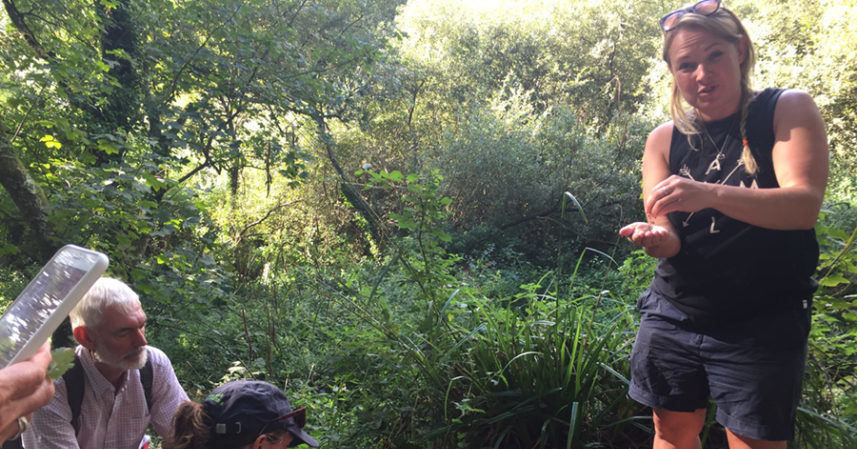Many thanks to the wonderful Emma Gunn of NeverMindThe Burdocks.co.uk for this wonderful blog about foraging in the spring!
After the long, cold and wet gloom of winter, there is nothing better than to see all the fresh spring growth emerging from its slumber! It awakens the soul.
I love this time of year and the thought of foraging for wild garlic and young nettle tops gives me inspiration for new recipes.
If you have never been foraging before, there are a few pointers I need to share with you.
Minimum impact
Never uproot anything without the landowner’s permission. It is illegal to do so and is basic common sense – if you want the plant to grow again, then leave it planted. If you are picking leaves, flowers or new shoots, then make sure you leave plenty on the plant for pollinators and for the plant to photosynthesize. With foraging, I encourage a light-footed approach so we can gain the benefits from eating delicious seasonal edibles but cause as little impact on the environment as possible. If you are picking fruit, then leave plenty behind for wildlife to survive.
Be sure
If you don’t know what something is, then don’t pick it. If you aren’t 100% sure, don’t risk it as there are many toxic lookalikes. Stick to plants that are easy to identify for examples blackberries and nettles, and arm yourself with some good foraging books. When you have been out a few times with your books, you will start to recognize edible plants that have been right on your doorstep. It is worthwhile noting which are toxic as much as which are edible, so you know what to look out for and avoid.
Cleanliness
Foraging is finding wild food, so with any food make sure it comes from a clean source. If you frequent a dog walking area, pick above leg-cocking height! If you are hunting for shellfish then don’t pick after rainfall as shellfish are filter-feeders and will absorb field run-off. Give it a week. If you are picking plants from or near a stream, check how clean the water is. You can check this online as rivers and the sea are regularly tested for water quality.
From March to May, there are some incredible flavours out there waiting to be discovered by you.
Here is a run down of things to look out for…

Allium ursinum – ramsons/wild garlic
I love this and if you love garlic, then you will too! Floppy elliptical leaves and a burst of white star-like flowers, the smell is unmistakable. Pick sporadically and check there is no hidden Lords and Ladies (Arum maculatum) nestled in the swathes. All parts of ramsons are edible from the leaves, flower buds, flowers to even the tiny unripe seed pods. Use in pasta, to make garlic bread or in any
savoury dish you fancy a delicious garlic hit.
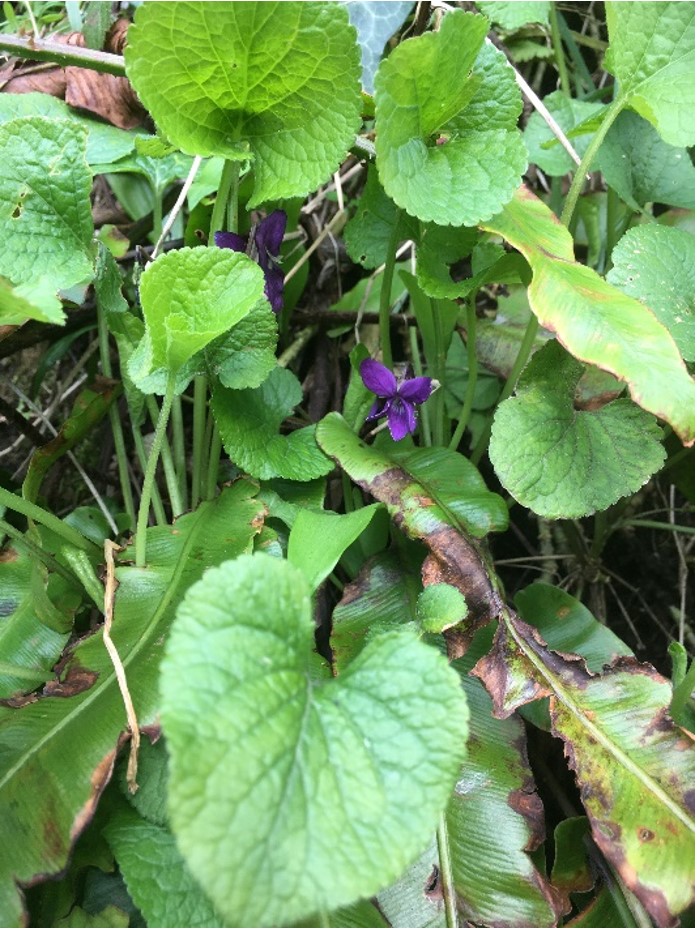
Viola odorata – sweet violets
Surprisingly these stunning amethyst-coloured flowers can begin flowering in December and go right through to April. From about April you’ll find dog violets (Viola riviniana) which are also edible but don’t have the floral Parma violet flavour that sweet violets do. The leaves are edible and with the flowers try using them in salads, crystallized to decorate cakes, made into a syrup or simply added to
sugar to impart the fragrance.
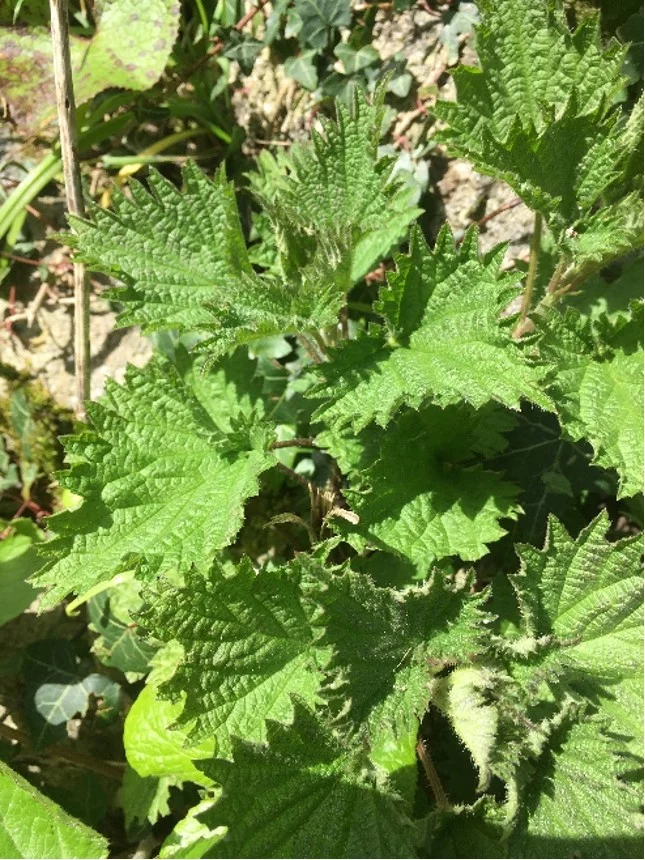
Urtica dioica – nettles
The stalwart of the foraging world! Easily recognizable and memorable from being stung(!), grab a pair of gloves and scissors and have a go at picking nettle tops. Nettles are such amazing plants. Fibres from the stems can be made into string and clothing, the flowers provide nectar for a variety of insects, their seeds are packed full of nutrients as are the leaves which are delicious as soup, crisps, roulade, aloo, bread, cake, cordial, beer… the list is endless! In the spring pick the nettle tops and in the summer harvest the seeds but not the leaves – when the plant is in seed then it is producing cystolyths in the leaves which can irritate the gut.

Taraxacum officinale – dandelions
A firm favourite of mine! Every part of the plant is edible. The roots make a good coffee substitute, the leaves can be eaten in salads, stir fries, baked as crisps, the flowers can be tempura battered, made into marmalade or cordial and even the stems can be cooked and eaten like noodles! The sap from the plant is non-toxic and can be used to make sun tattoos – dot the sap on your skin and watch the pattern slowly appear. Leave plenty of flowers behind for the bees as they are rich in pollen and nectar, plus an early flowerer.

Umbilicus rupestris – navelwort
Also known as pennywort (or bellybuttons by my daughter), these succulent round leaves grow out of walls, hedges and even on trees! Umbilicus means bellybutton and these bellybutton-like leaves can be eaten in salads and sandwiches. If we are out on a walk and someone falls over, the hunt is on to find navelwort. When found, we peel the leaves and stick them on like a plaster!
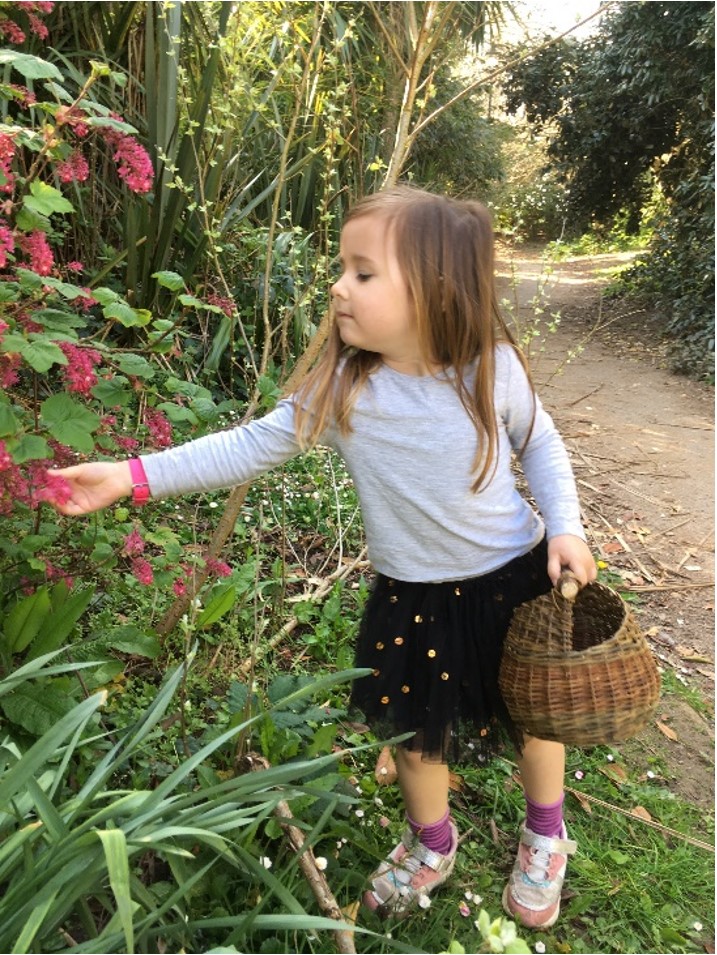
Ribes sanguineum – flowering currant
Flowering currant is not a ‘wild’ plant but one you’ll come across in gardens and parks. In the spring it produces pendulous cerise flowers which smell like fruity sage. The flowers make a great cordial, sherbet, sorbet or in baking. The fruits come later and are edible but not worthwhile. The last recipe I used it for was as a sherbet and it was zingy and delicious!

Primula vulgaris – primrose
The word primula is derived from Latin ‘primus’ meaning first, as it is one of the first flowers to appear in spring. These pretty pale yellow flowers are excellent in salads, crystallized as cake decorations and the leaves are edible too. Remember to pick sporadically so there are plenty for pollinators.
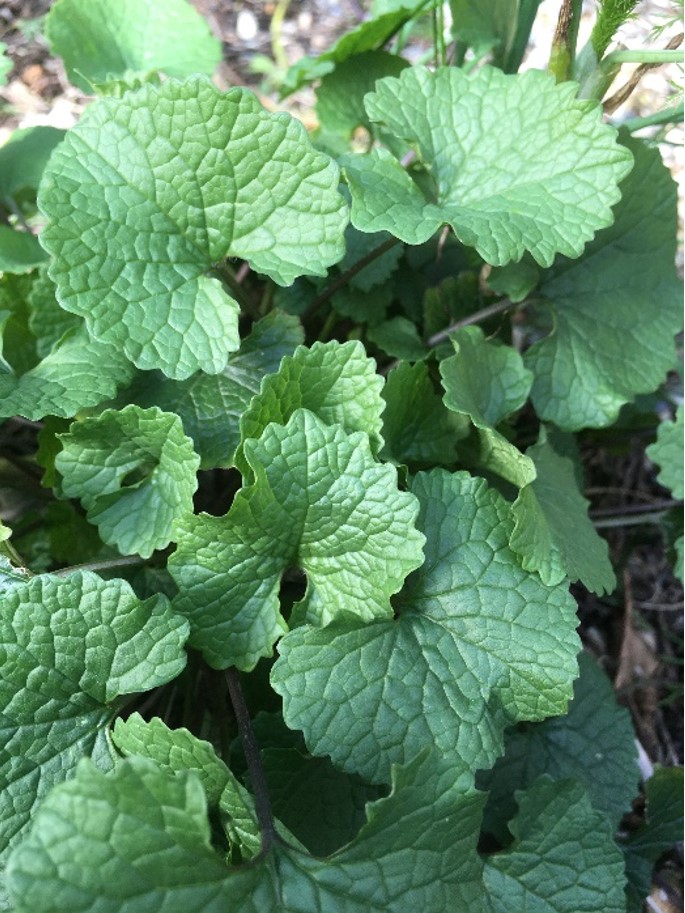
Alliaria petiolata – garlic mustard
Is it garlic or is it mustard? It is actually a brassica so it sits in the mustard family but has a lovely garlicky taste to it. The leaves and aerial parts make a great salsa verde for lamb, they are delicious in salads, steamed as a vegetable and in omelettes or quiches. I have it growing in my garden as a weed so when I pull it up, I use the roots as a wasabi substitute. Garlic mustard is also known as Jack-by-the-hedge and is biennial. In the winter it produces basal leaves that are round and scalloped.
I hope you enjoy going out and foraging this spring!
If you fancy doing a bit of foraging but are new to it, why not purchase one of my foraging books? There is one for every season and an entry for every day of the year. Suitable for beginners to experts, there are photos to help you with identification, lookalikes, food ideas, recipes and various other useful tips! Happy foraging!
www.nevermindtheburdocks.co.uk
Enjoy a break in Cornwall
If you would like to come down to do your foraging here in Cornwall, you can enjoy a break at Bosinver. We’ve got a range of cottages which sleep 4-12 people and we’ve won many awards because we are passionate about sustainability – find out more and check availability.
Have you enjoyed foraging or spending time in nature? We’d love to hear from you on our Facebook page, Instagram @Action_Nan or tweet @ActionNan





